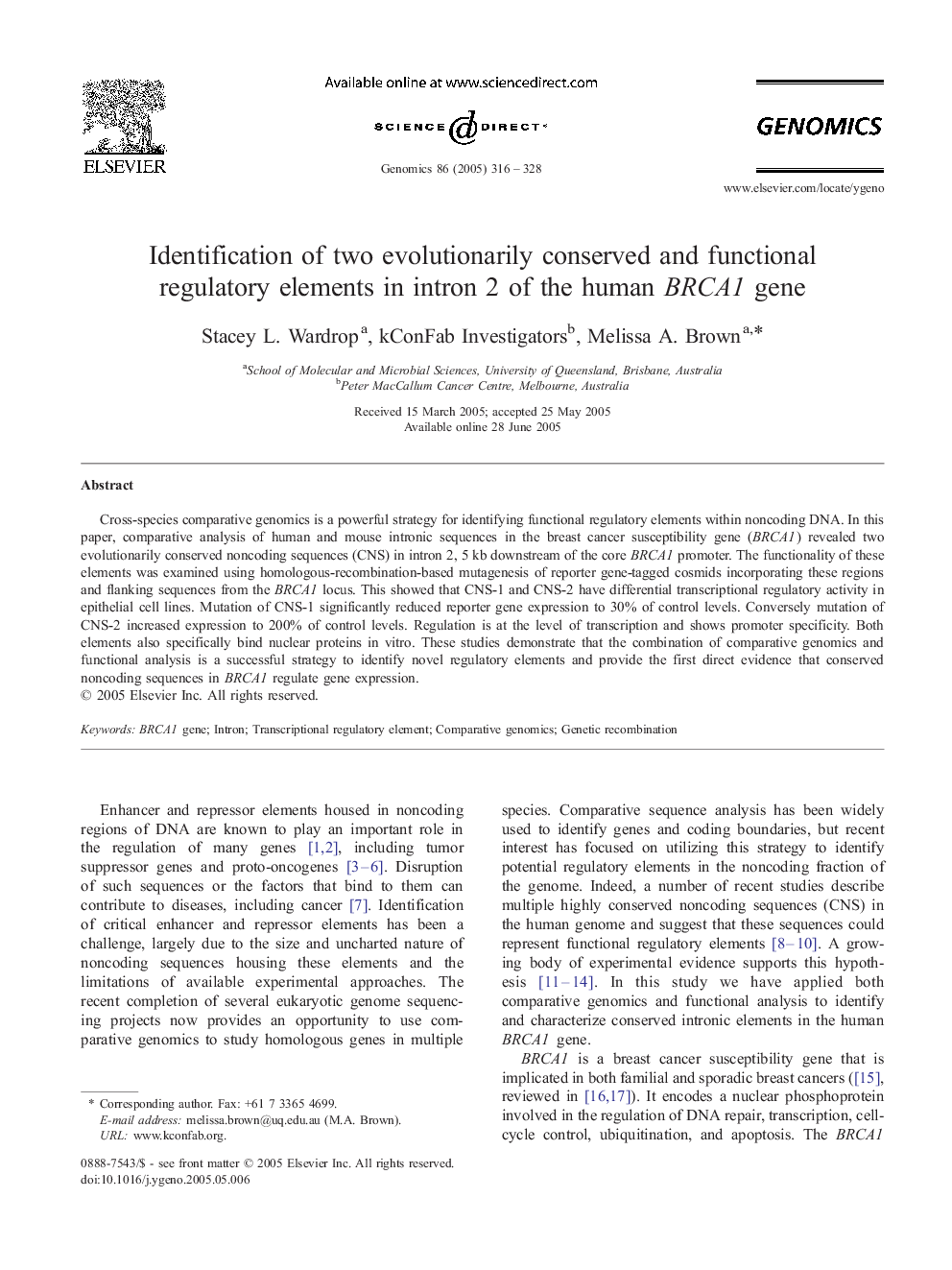| Article ID | Journal | Published Year | Pages | File Type |
|---|---|---|---|---|
| 9131871 | Genomics | 2005 | 13 Pages |
Abstract
Cross-species comparative genomics is a powerful strategy for identifying functional regulatory elements within noncoding DNA. In this paper, comparative analysis of human and mouse intronic sequences in the breast cancer susceptibility gene (BRCA1) revealed two evolutionarily conserved noncoding sequences (CNS) in intron 2, 5 kb downstream of the core BRCA1 promoter. The functionality of these elements was examined using homologous-recombination-based mutagenesis of reporter gene-tagged cosmids incorporating these regions and flanking sequences from the BRCA1 locus. This showed that CNS-1 and CNS-2 have differential transcriptional regulatory activity in epithelial cell lines. Mutation of CNS-1 significantly reduced reporter gene expression to 30% of control levels. Conversely mutation of CNS-2 increased expression to 200% of control levels. Regulation is at the level of transcription and shows promoter specificity. Both elements also specifically bind nuclear proteins in vitro. These studies demonstrate that the combination of comparative genomics and functional analysis is a successful strategy to identify novel regulatory elements and provide the first direct evidence that conserved noncoding sequences in BRCA1 regulate gene expression.
Related Topics
Life Sciences
Biochemistry, Genetics and Molecular Biology
Genetics
Authors
Stacey L. Wardrop, kConFab Investigators kConFab Investigators, Melissa A. Brown,
